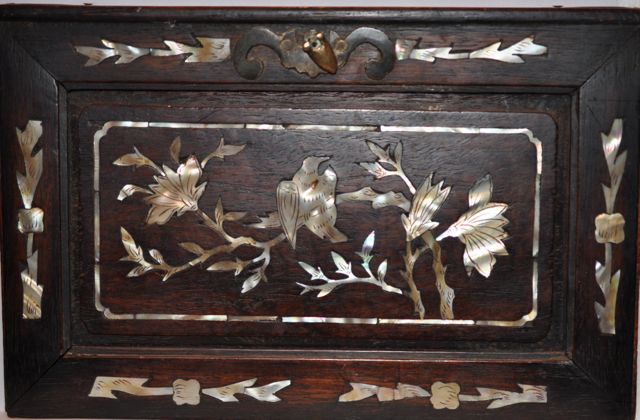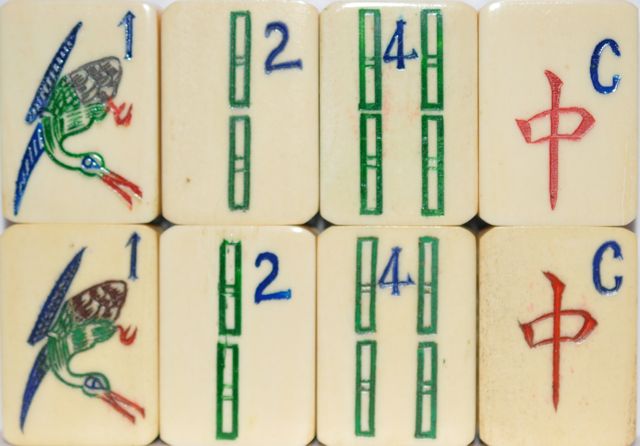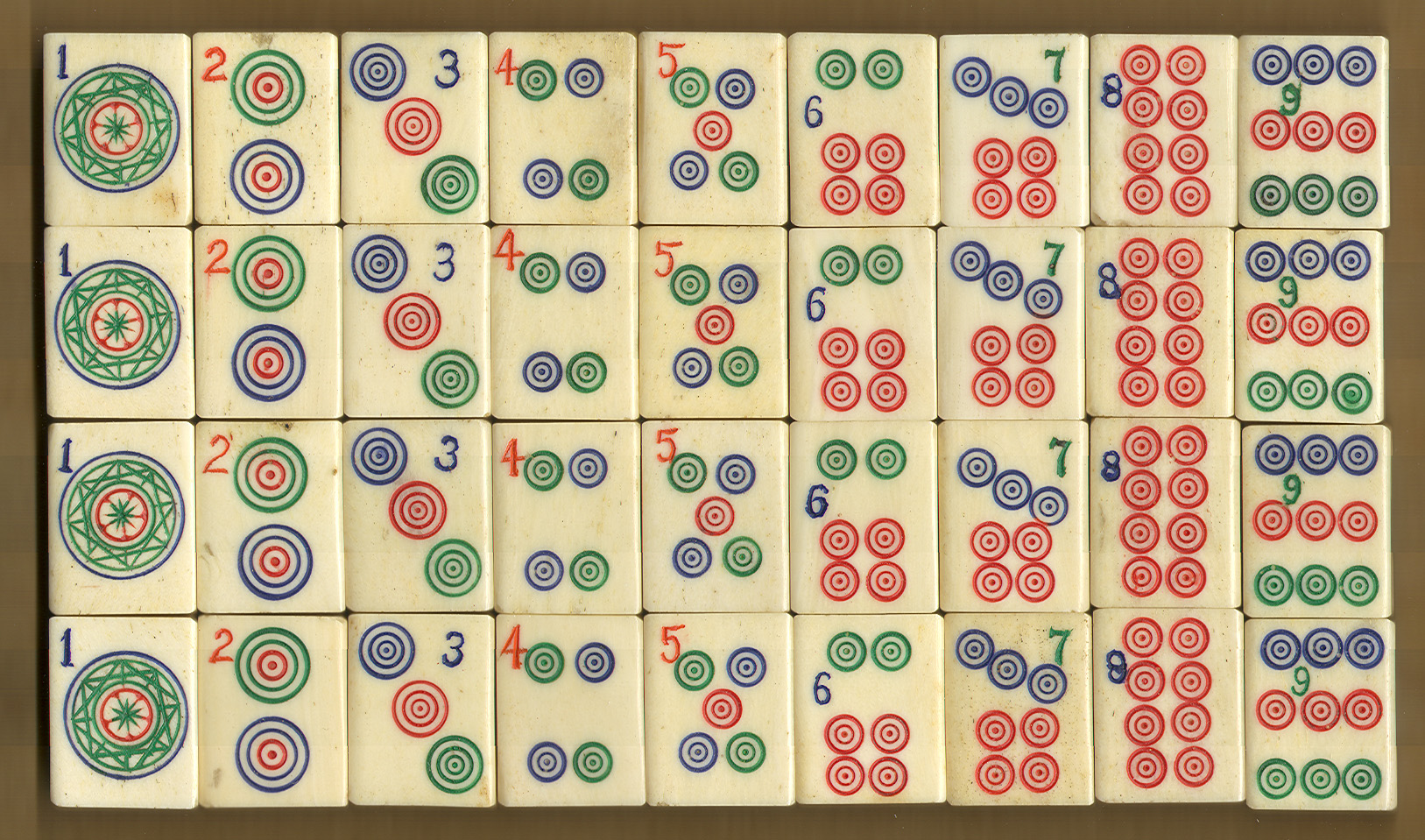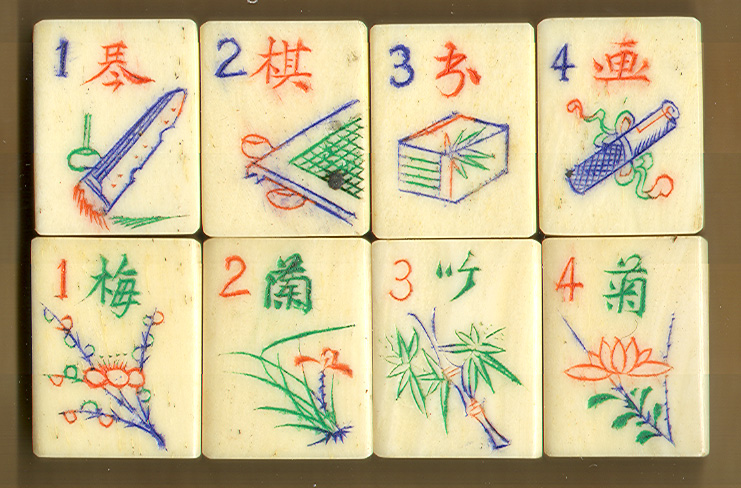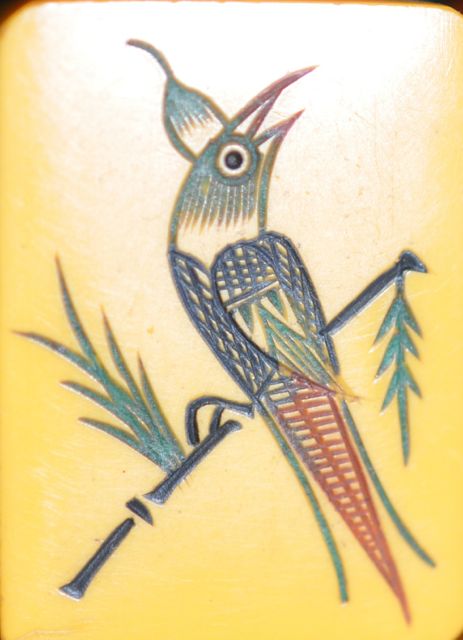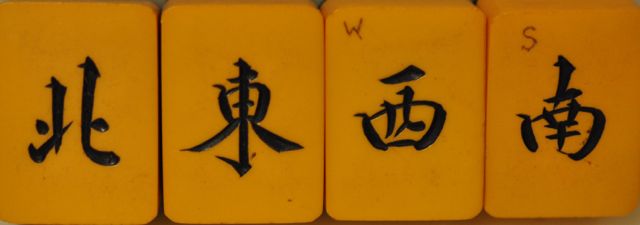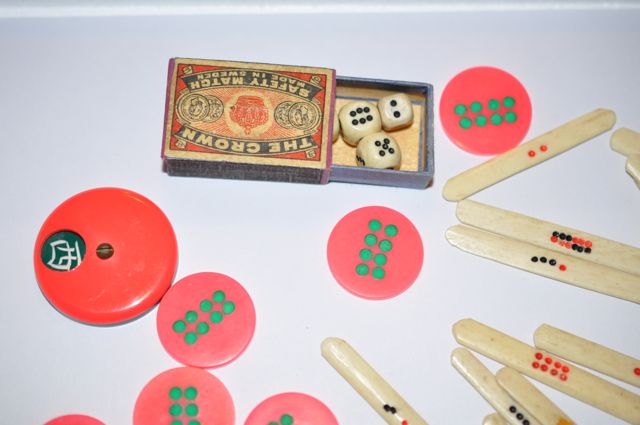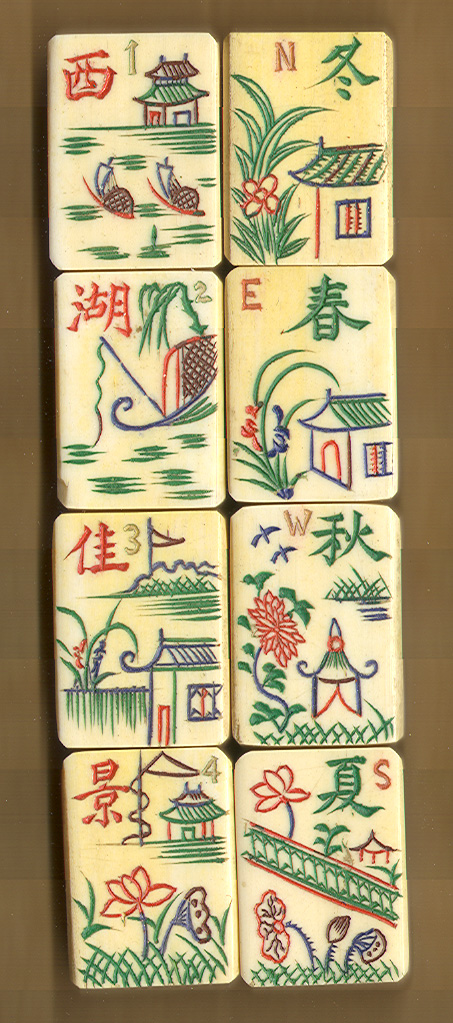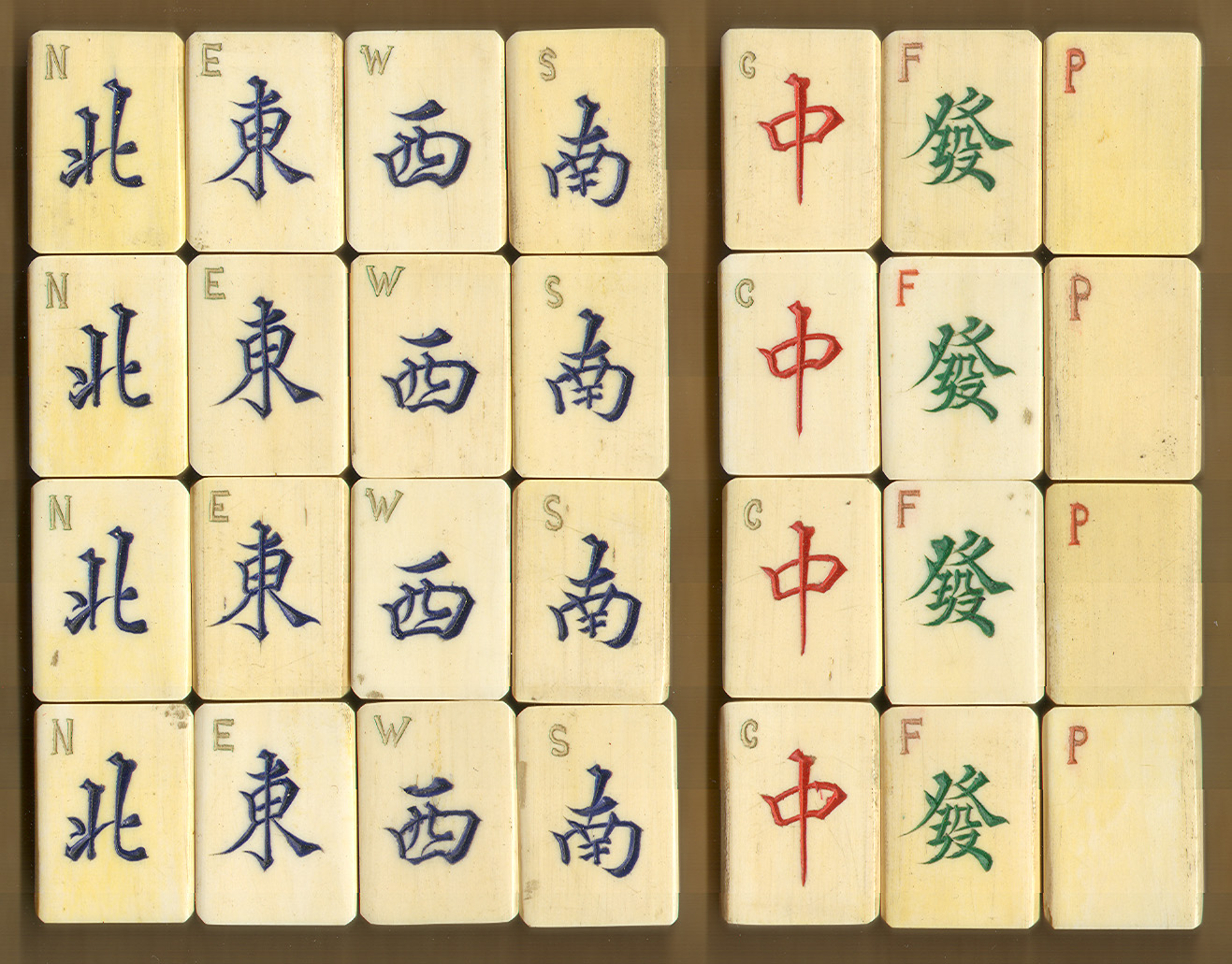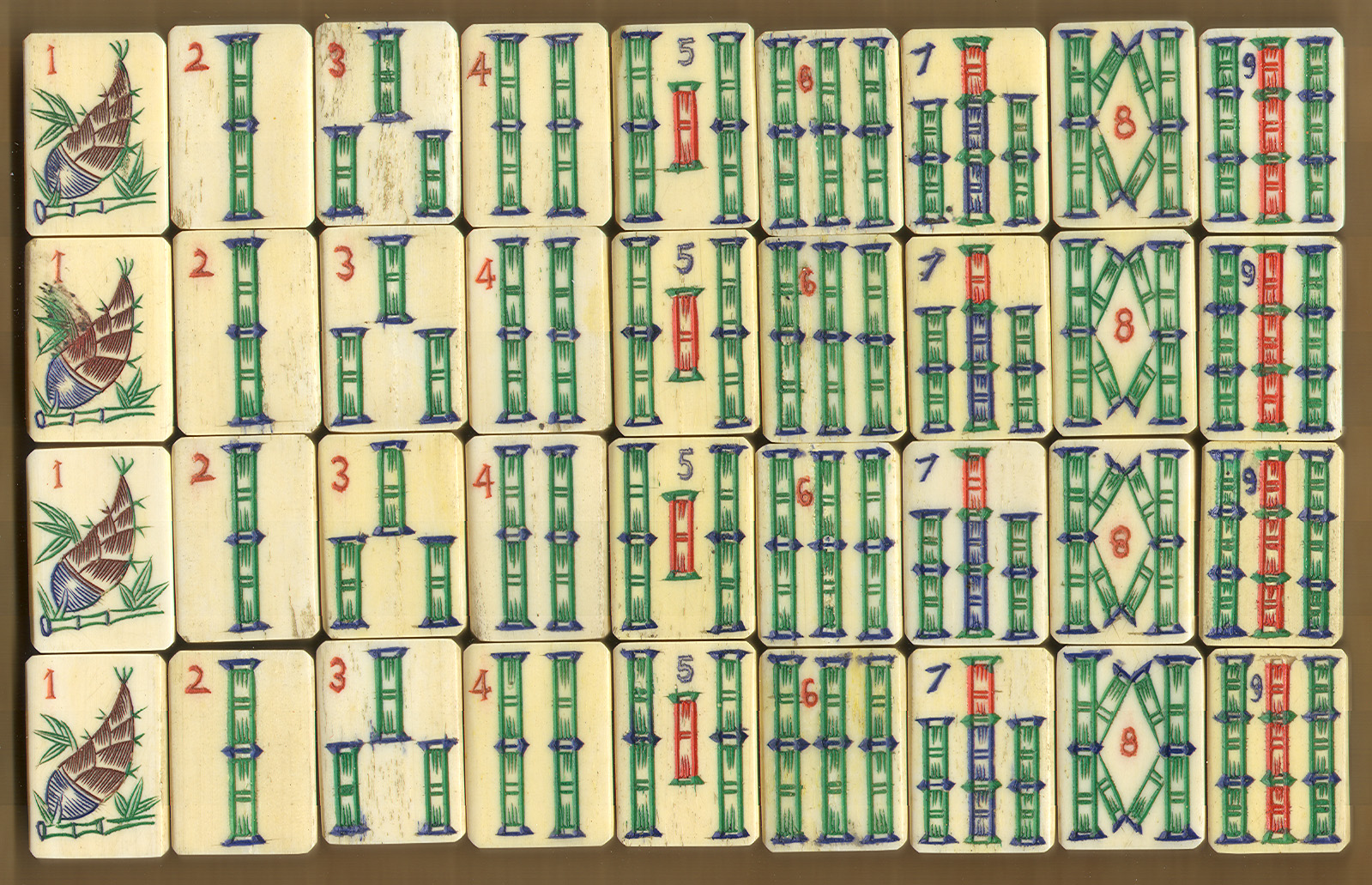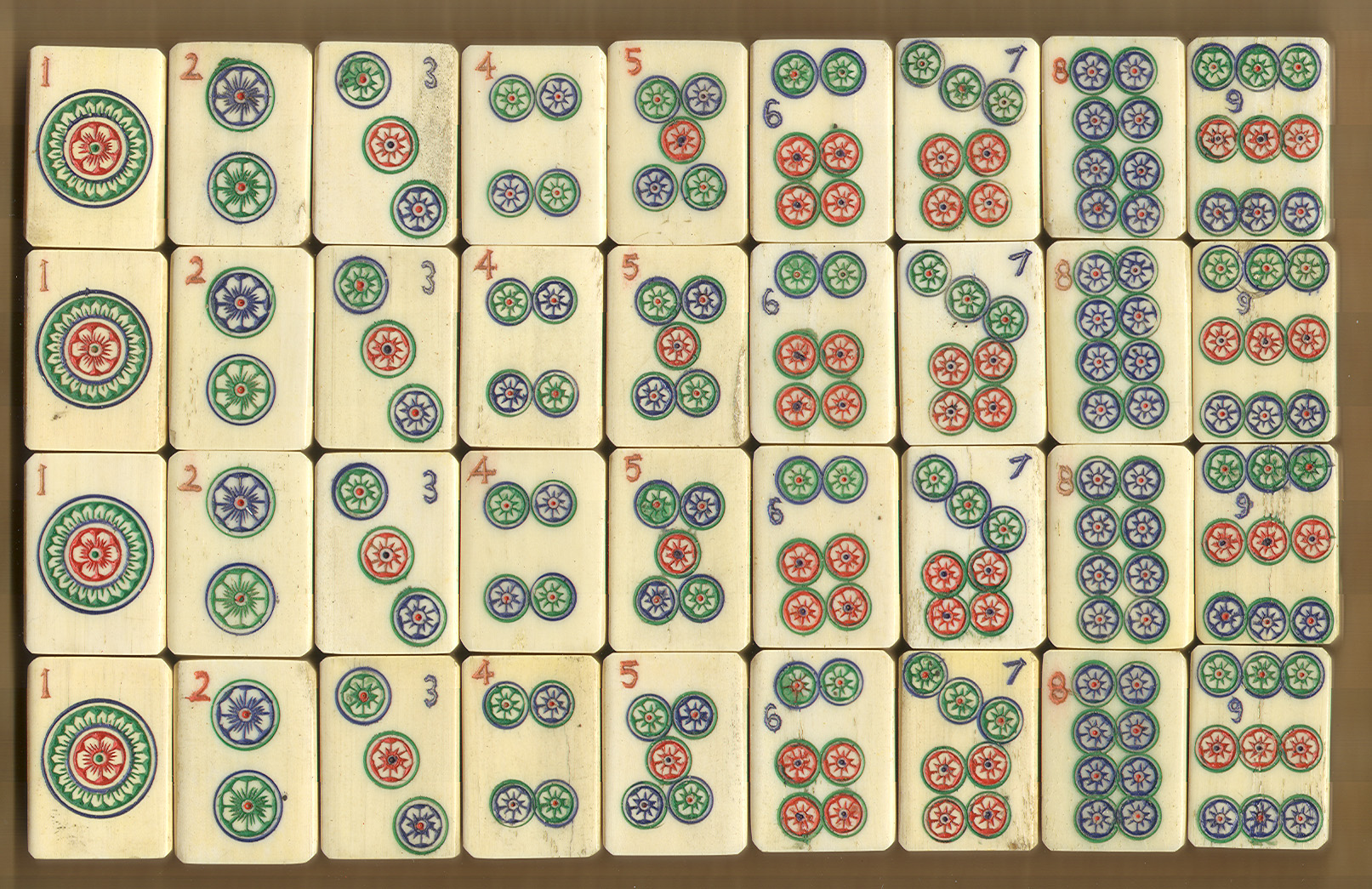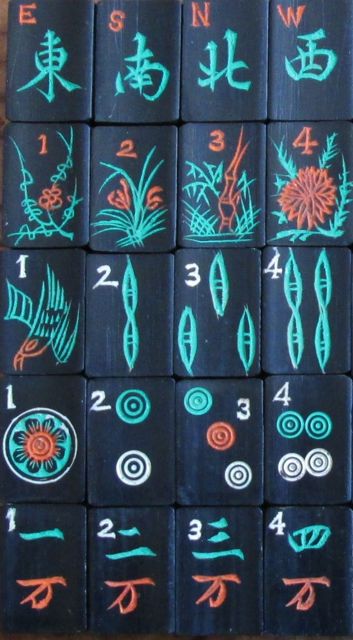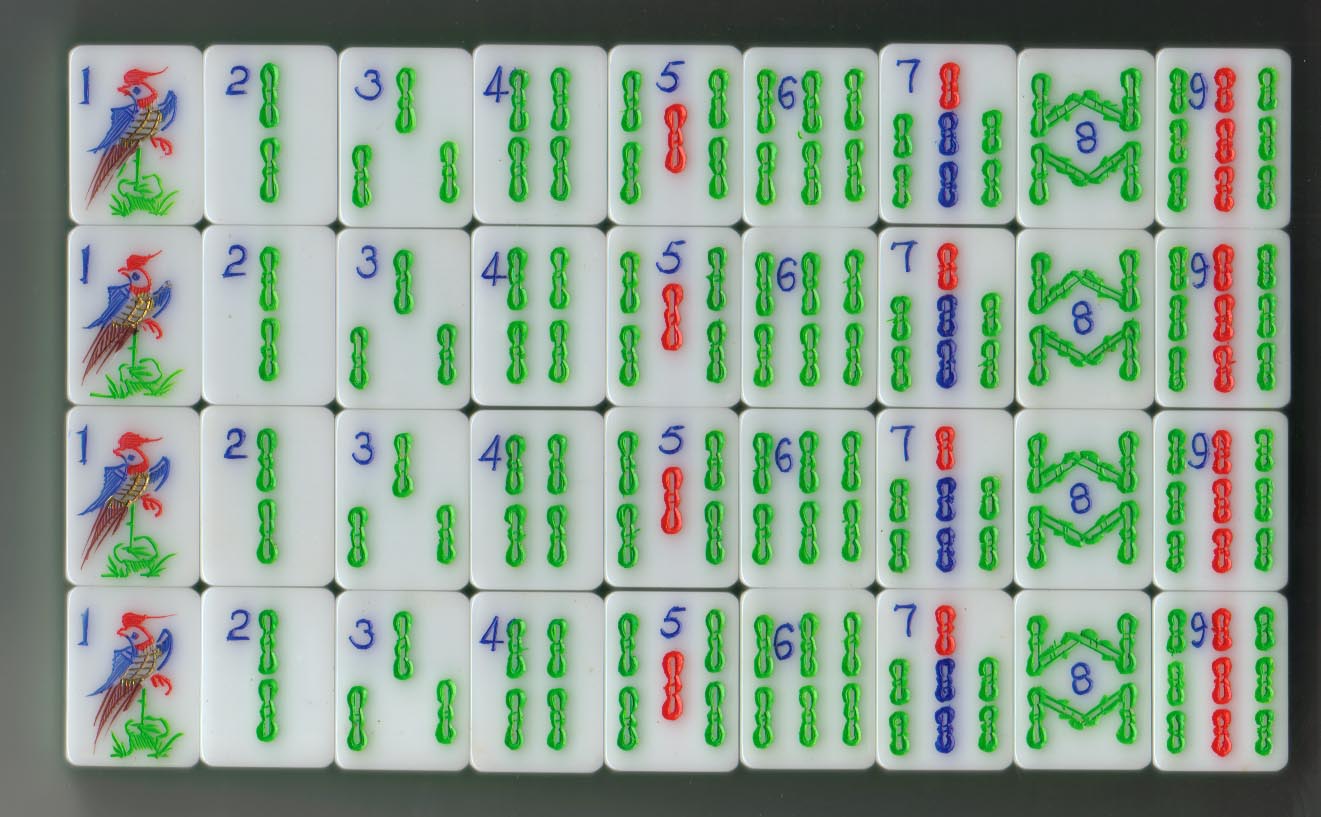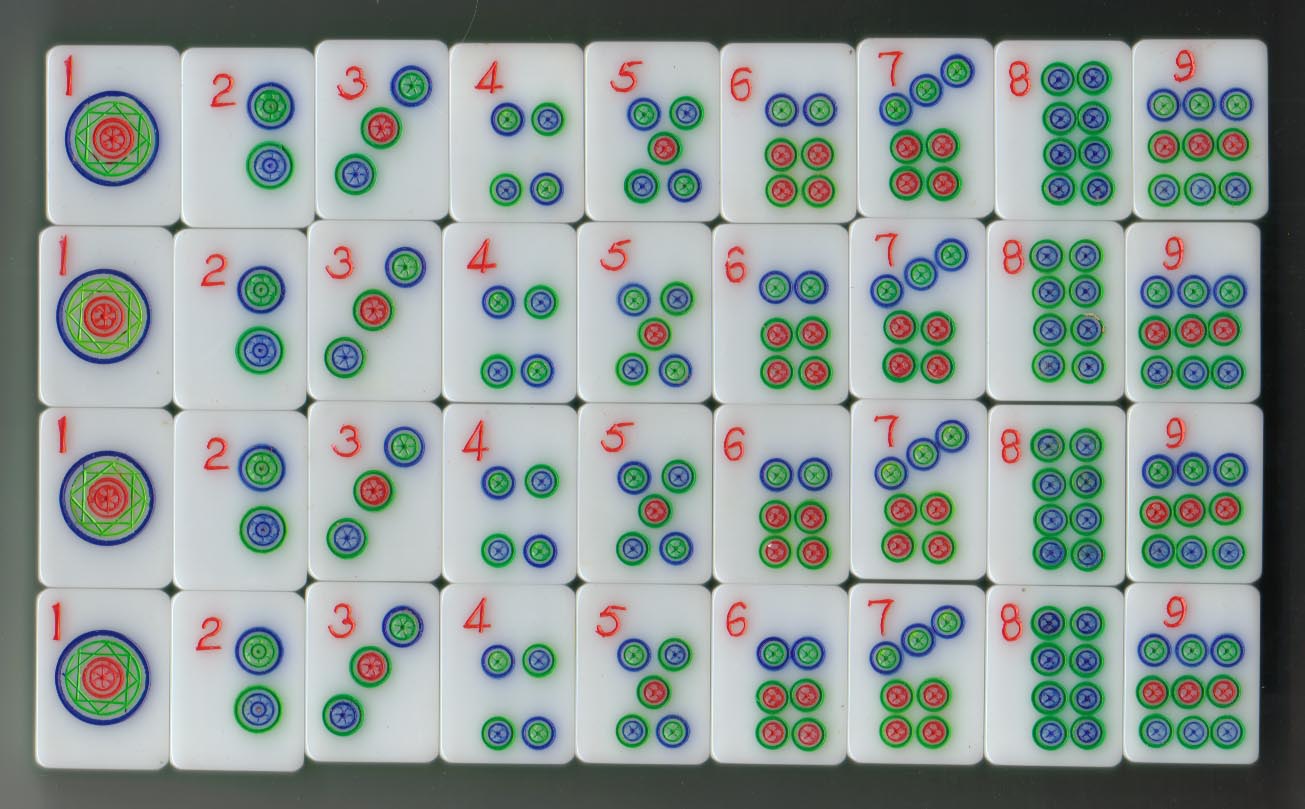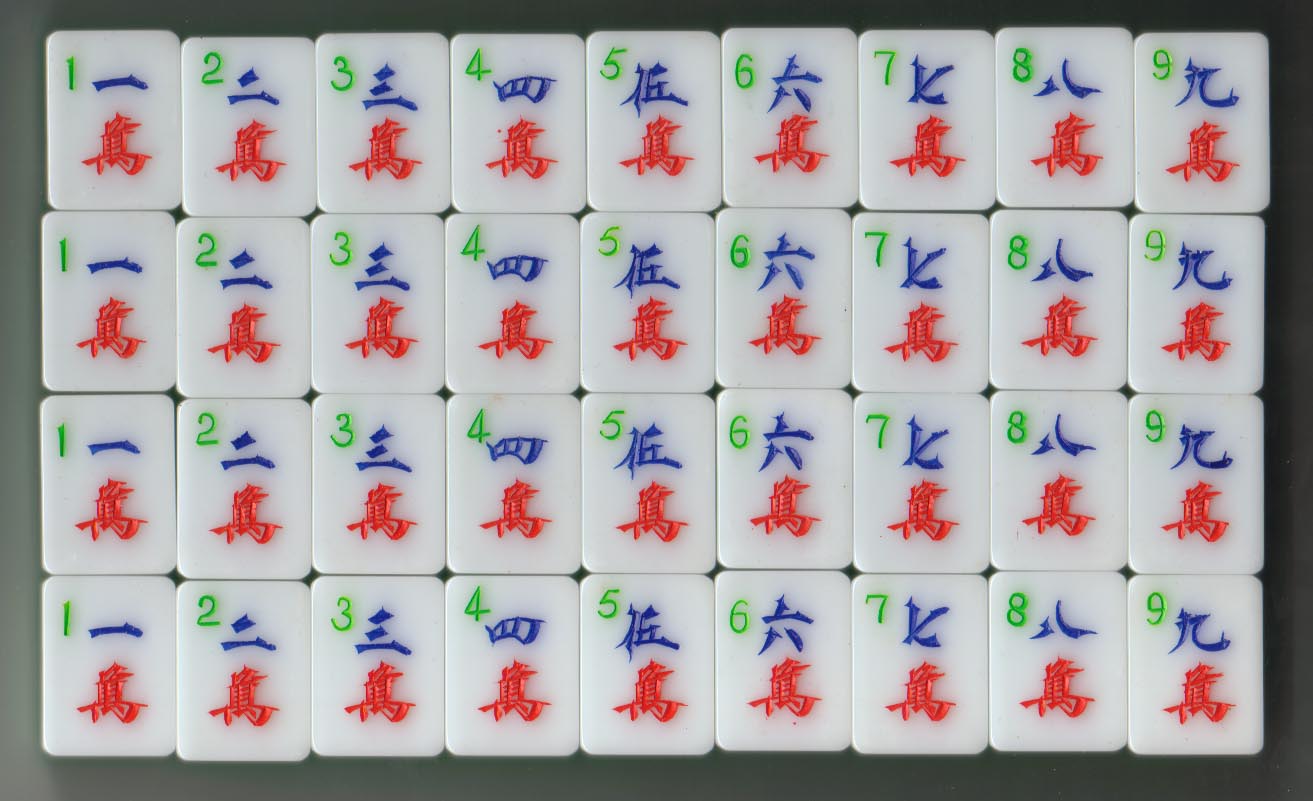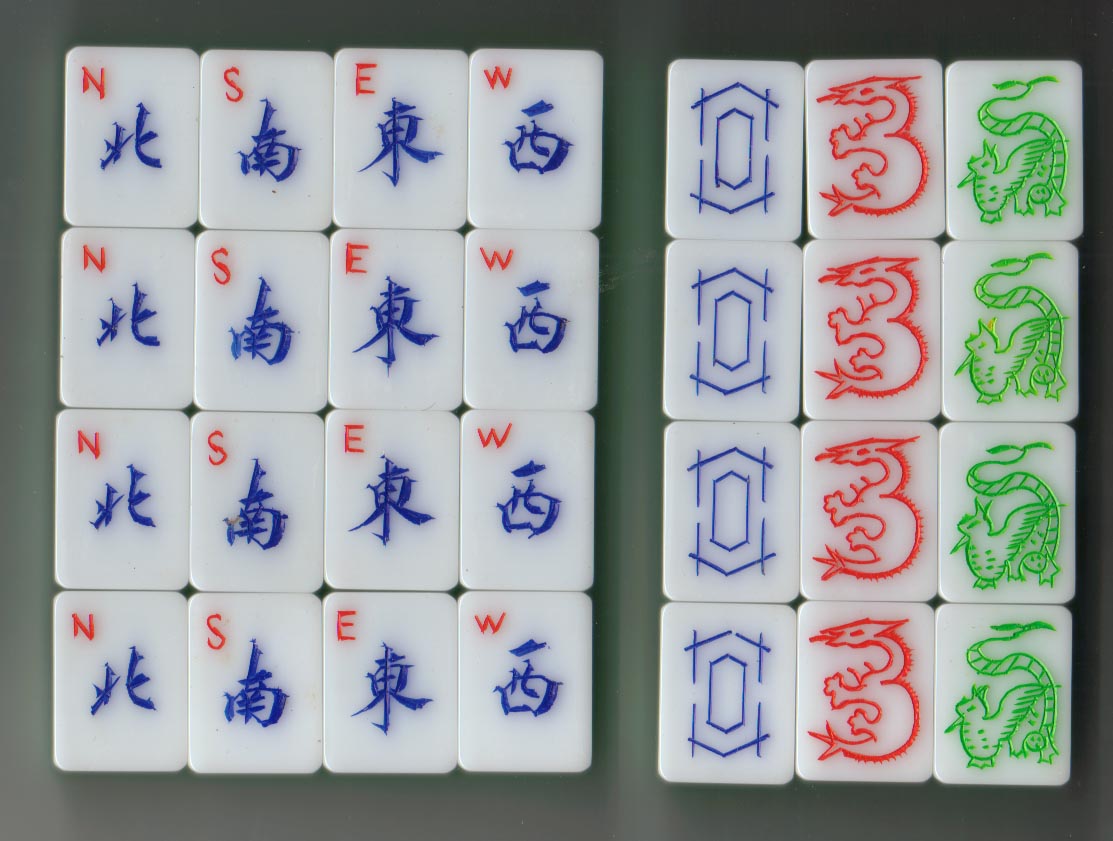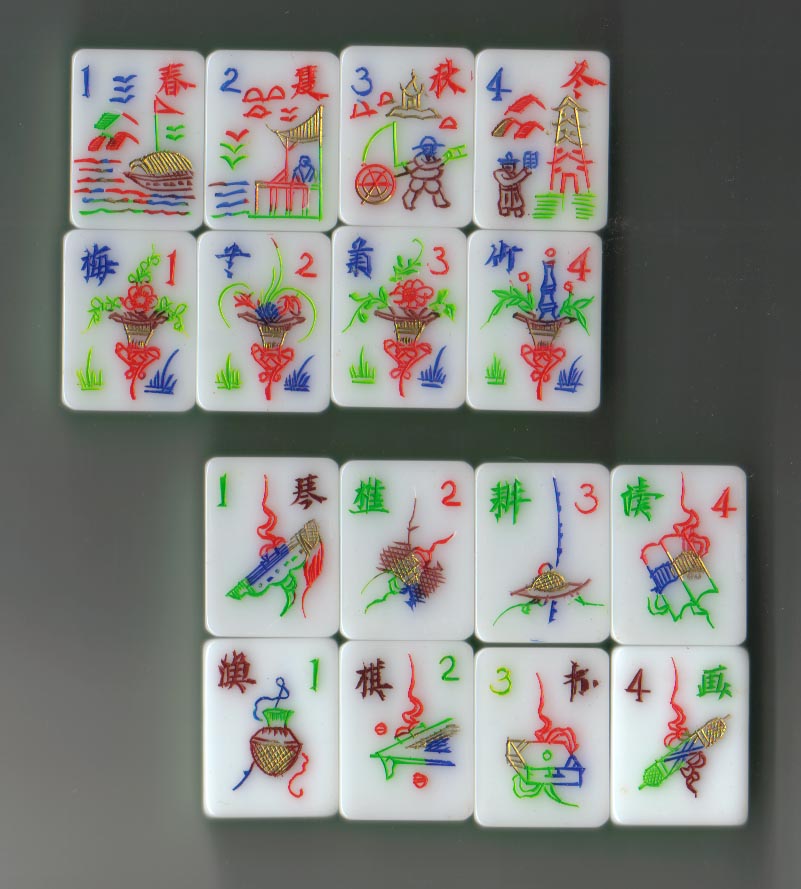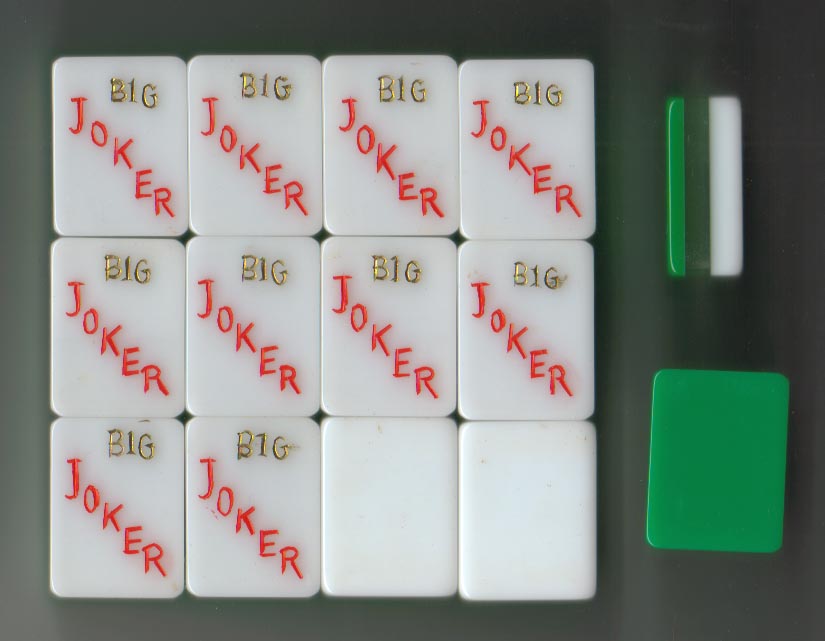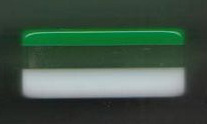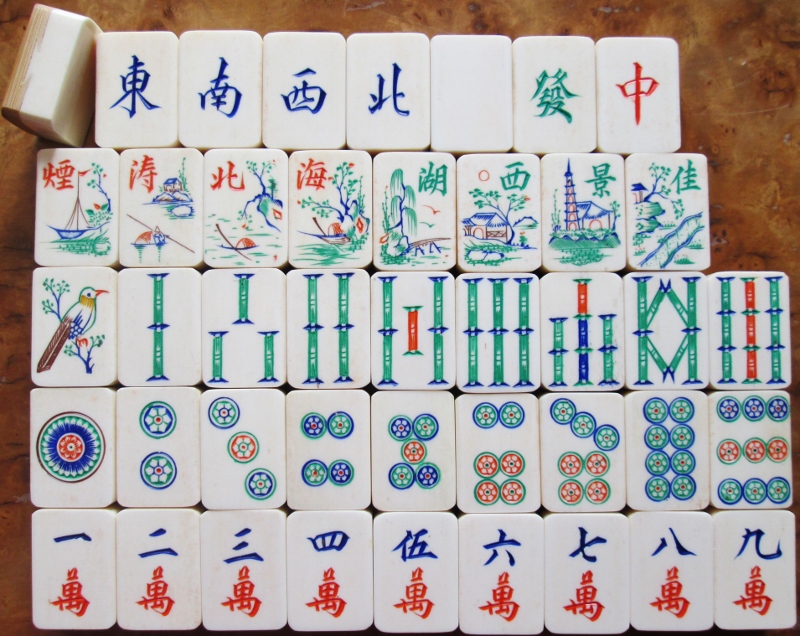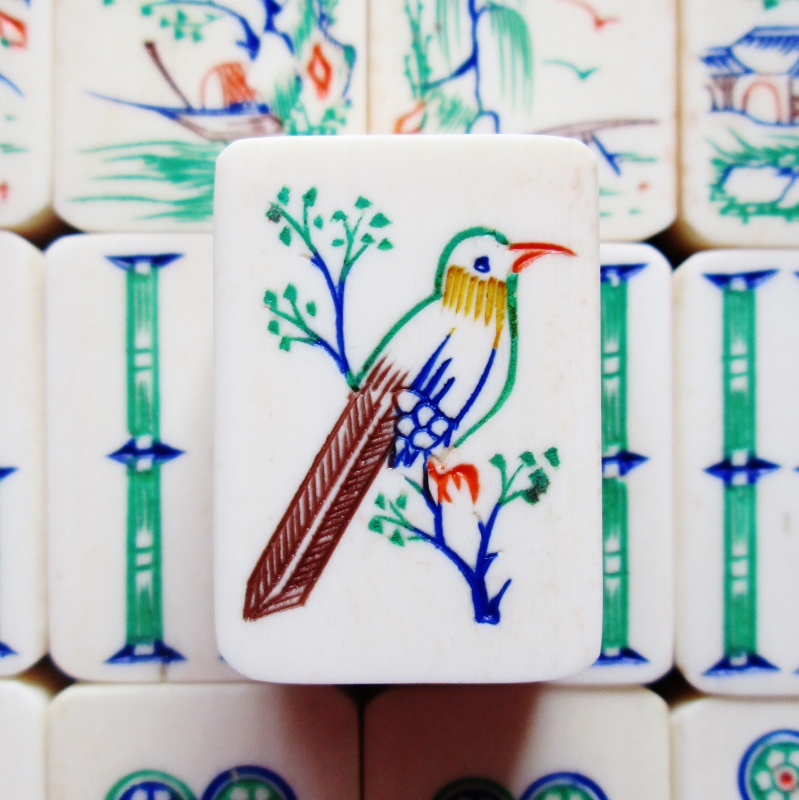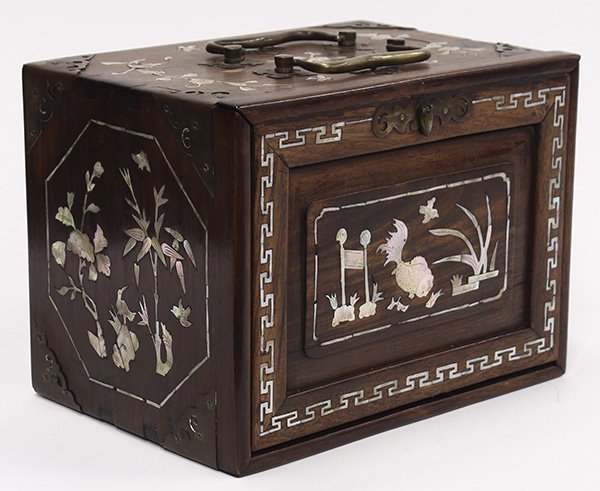 This inlaid mother-of-pearl box sold at Clars Auction Gallery. Its set is missing, but hopefully the box will house another wonderful set some day.
This inlaid mother-of-pearl box sold at Clars Auction Gallery. Its set is missing, but hopefully the box will house another wonderful set some day.
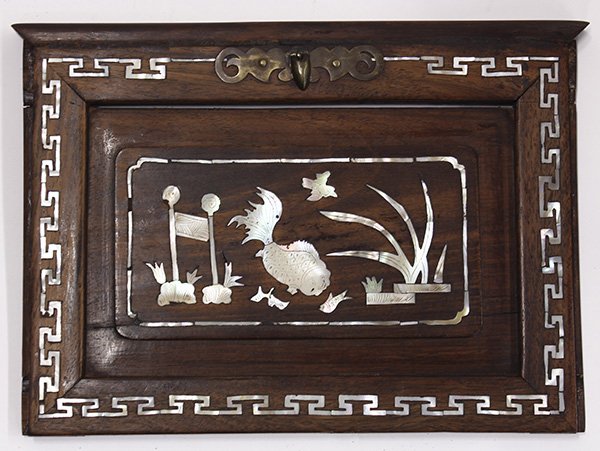 You can see here a goldfish, birds, and plants on the front panel. According to Patricia Bjaaland Welch in Chinese Art, goldfish is symbolic of material success in China because the its name is a homophone of the Chinese words for gold and jade. (Many objects and creatures are symbolic because of their homophones).The goldfish has fabulous details on his body and his wonderful tail. Surrounding this scene is a meander, an abstract design named after the very winding river Meander in Turkey. Abstract designs such as these figure prominently in Mahjong.
You can see here a goldfish, birds, and plants on the front panel. According to Patricia Bjaaland Welch in Chinese Art, goldfish is symbolic of material success in China because the its name is a homophone of the Chinese words for gold and jade. (Many objects and creatures are symbolic because of their homophones).The goldfish has fabulous details on his body and his wonderful tail. Surrounding this scene is a meander, an abstract design named after the very winding river Meander in Turkey. Abstract designs such as these figure prominently in Mahjong.
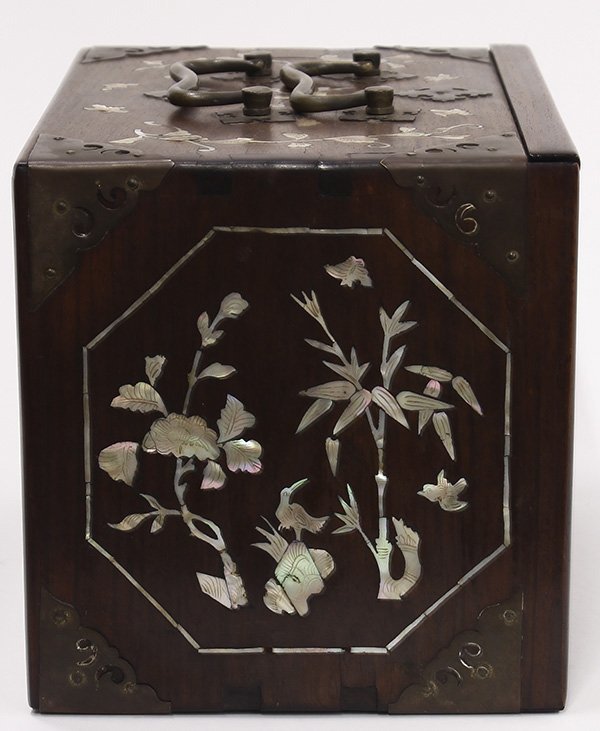 This side panel features the familiar bird standing on a rock, a bird in flight and a butterfly, and a peony on the left.
This side panel features the familiar bird standing on a rock, a bird in flight and a butterfly, and a peony on the left.
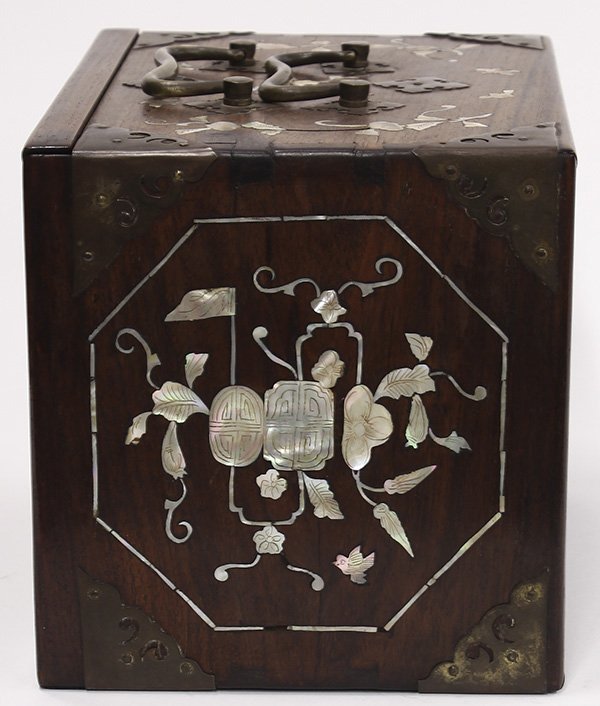 Two abstract versions of longevity can be seen as parts of the central meander. A plum blossom (five petals) is center bottom.
Two abstract versions of longevity can be seen as parts of the central meander. A plum blossom (five petals) is center bottom.
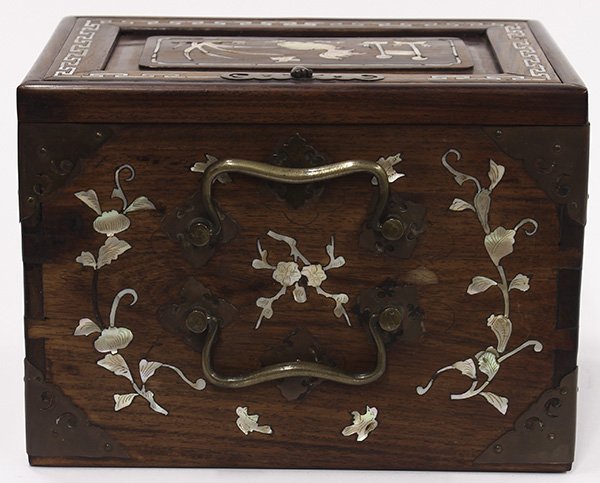 The top of the box features flying birds and plum blossoms in the center. What might be two pomegranates, a symbols of fertility because of all the seeds they contain, are on the left.
The top of the box features flying birds and plum blossoms in the center. What might be two pomegranates, a symbols of fertility because of all the seeds they contain, are on the left.

